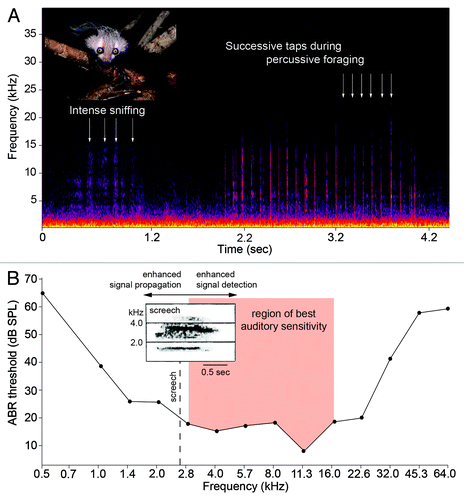Figures & data
Figure 1. (A) Adult aye-aye and spectrogram of percussive foraging behavior. Each tap of the third digit is discernable with a dominant energy of 6–15 kHz. (B) Mean audiogram of two aye-ayes and the region of best auditory sensitivity (modified from Ramsier et al.Citation21). Insert: spectrogram of the aye-aye’s primary long-distance vocalization, the screech (‘aack’ variant), with a dominant frequency of 2.66 kHz (modified from in Stanger and MacedoniaCitation30). Photograph of aye-aye by D.M. Haring, reproduced with permission.
